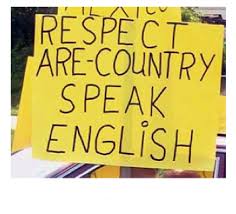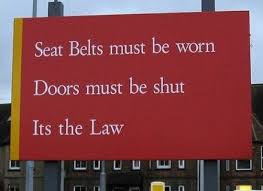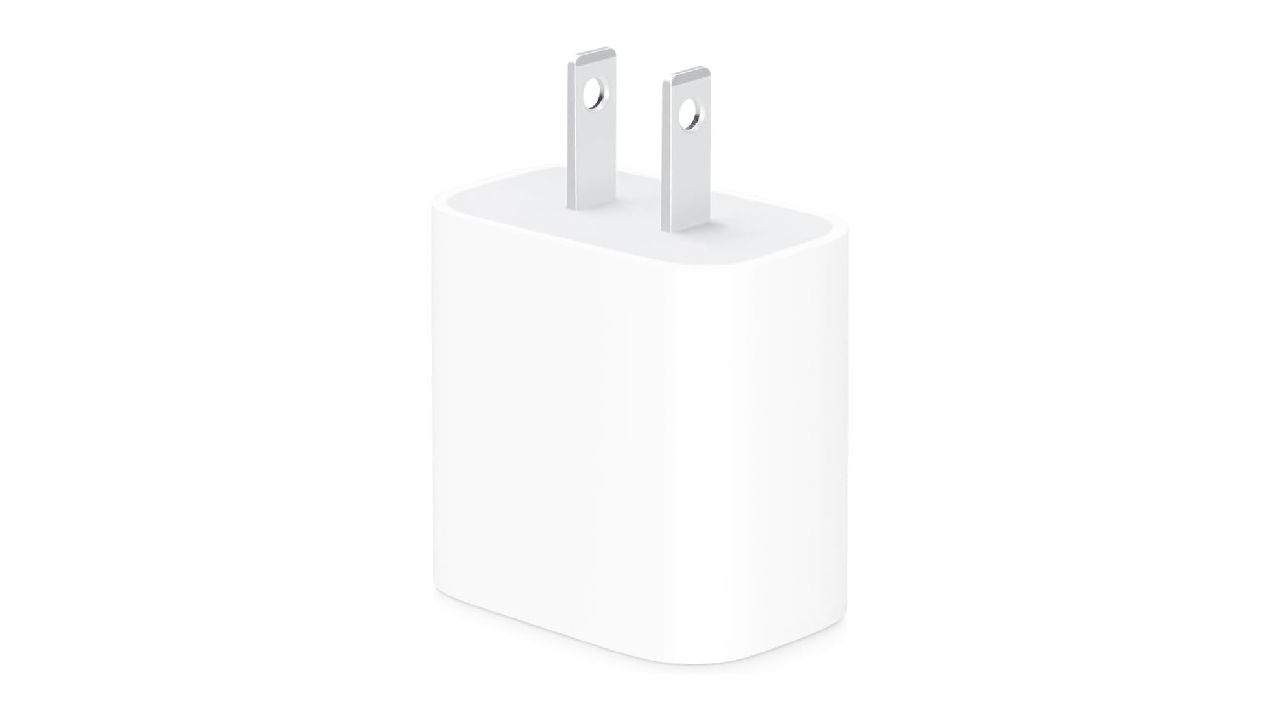This is my 5th blog post on GMAT free practice questions. In the first blog we saw how to prepare for GMAT. In this blog you will some more practice questions. You can find all answer in red in the middle of blog. In this part of test you will find grammatical errors practice.
You can also use this test for other english related exams.
Note-If there is no error, choose option A.
Free and New GMAT Practice Test Sample Questions 76-95
Q 76
To no ones surprise, Joe didn't have his homework ready.
A. no ones surprise
B. noones surprise
C. no-ones surprise
D. no ones' surprise
E. no one's surprise
Q 77
If he would have read "The White Birds," he might have liked William Butler Yeats' poetry.
A. would have read
B. could have read
C. would of read
D. could of read
E. had read
Q 78
After the hurricane, uprooted trees were laying all over the ground.
A. were laying
B. lying
C. were lying
D. were laid
E. was laid
Q 79
Ralph Waldo Emerson (1803-1882), the great transcendentalist philosopher, wrote in his essay "Self-Reliance" of the need for an individual to develop his capacities.
A. essay "Self-Reliance"
B. essay, "Self-Reliance"
C. essay: Self-Reliance
D. essay, Self-Reliance
E. essay; "Self-Reliance"
____________________________________________________

Free and New GMAT Practice Test Sample Questions 76-95 Answers and Explanations
76. E: "No one's is a possessive pronoun and needs the apostrophe." Omitting it [sentence, (A), (B), and (C)] is incorrect. "No one" is spelled as two words, not one (B) or one hyphenated word (C). An apostrophe after the s (D) denotes a possessive plural, not a possessive singular.
77. E: The past unreal conditional should consist of "if" plus the past perfect of "to read" (auxiliary verb "had" with "read"). Adding "would" or "could" to the past perfect [sentence, (A), (B), (C), and (D)] is incorrect. In the "If…then" past unreal conditional construction, "would have" is only used in the second ("then" understood) clause, never in the first "If" clause. Also, "of" [(C), (D) is a preposition, an incorrect substitute for the auxiliary verb "have."
78. C: The correct past progressive tense of the verb "to lie" is "were lying." "Were laying" (A) is acting on an object, e.g. "Workers were laying uprooted trees on the side of the road." Without the auxiliary verb "were," "lying" (B) is incomplete and does not form a predicate for the subject "trees." "Were laid" (D) means somebody/something laid them there, not that the trees themselves were lying there. "Was laid" is singular, not plural as "trees" are.
79. A: A comma (B), colon (C), or semicolon (E) is incorrect and unnecessary between the noun and its proper name.
80. A: No punctuation other than the quotation marks is required or correct after "and" and around "an eyesore." Commas [(B), (C)], semicolons (C), or dashes [(D), (E)] are incorrect. Omitting quotation marks (D) is incorrect since the sentence is quoting people; and the first phrase has them, so the second also should. The apostrophes [(D), (E)] are incorrect: the irregular possessive pronoun "its" does not have an apostrophe.
81. B: The end quotation mark should come after the word but inside the end parenthesis. Putting it after the period, outside the end parenthesis (A) is incorrect. Omitting the end quotation mark (C) is incorrect. Omitting parentheses and capitalizing the infinitive verb example (D) are both incorrect. Omitting the open parenthesis (E) is incorrect. Both quotation marks and parentheses always come in pairs.
82. C: There should not be any punctuation between the verb and its object, even if the object is a title in quotation marks as it is here. Therefore, a dash (A), comma [(B, (D)], colon (E), or any combination of two [(A), (E)] is incorrect. Additionally, omitting quotation marks around the title [(B), (E) is incorrect.
83. B: The verb is modified by the adverb "perfectly," not "perfect" [(A), (C), (D)], an adjective for modifying a noun. "After it was repaired" indicates past tense, so for agreement, the verb should also be the past tense "ran." "Could run" (C) and "would run" (E) are not past tense but unreal subjunctive mood. There is no such construction as "could of" (D), which incorrectly substitutes the preposition "of" for the auxiliary verb "have," part of the past perfect tense.
84. D: The question mark comes after the question, inside the quotation marks. A line of dialogue or a quotation normally has a comma [(A), (C), (E)], but inside the end quotation mark when it is a statement. When it is a question it has a question mark, which should NOT go at the end of the sentence [(A), (E)] containing the question, when that sentence is a statement. Also, the adverb "there" is misspelled as the possessive plural third-person pronoun "their" in (B) and (C).
85. D: From the context, we assume the circus acrobats performed the stunt and received the applause that the audience gave. For the audience to receive applause makes no sense in this context [sentence, (A), (C), (E)]. Omitting the hyphen in "well-deserved" [(B), (C)] is also incorrect.
86. E: A comma, not a hyphen (B) introduces dialogue/quotations. A semicolon, not a comma (B) separates two independent clauses. A colon (A) is incorrect, because the first clause does not introduce the second clause and is not explained by it. (C) omits quotation marks. Past perfect (D) is not incorrect in itself, but past tense in the original sentence was not incorrect and required no change.
87. A: A comma after each italicized Latin word and after each English translation, inside the quotation marks surrounding the latter, is correct. Separating any of these terms with dashes is incorrect [(B), (C), (D), and (E)]. A dash followed by a comma is always incorrect, as is separating a pair with a hyphen (D). Both pairs should be separated by commas; (E) omits the comma from the second pair.
88. B: Each item in a series of three or more is separated with a comma. Omitting the last comma before "and" [(C), (D), (E)] is incorrect. The term "moray eel" is not a proper name but a common name for many types of eels and thus is not capitalized [(A), (D)] (unless it begins a sentence). Present verb tense [(C), (D)] is not incorrect, but these choices also include the identified punctuation [(C), (D)] and capitalization (D) errors.
89. A: "A planet" is not a name, hence not capitalized; a comma should separate the independent clause from the following phrase (B); "outside" is one word [(B), (E)]. Adding "could be" (C) changes the meaning and is also ungrammatical, creating two unconnected predicates "…the fact could be…encourages…" requiring ", which" before "encourages" or changing "encourages" to ", encouraging…" "Fact" and "planet" are both singular nouns; "exist" and "encourage" (D) belong with plural nouns. The words "…does exists…" should be "…does exist" (E).
90. E: A semicolon separates independent clauses. Omitting punctuation (A), including that semicolon and the hyphen from "time-saving" [(A), (B)], is incorrect. Spelling "time-saving" as two separate words [(C), (D)] is also incorrect. Substituting "should" (C) or "could" (D) for "can" alters the meaning.
91. E: The word "science" is not capitalized [(B), (C), (D). The phrase "what turns you on" is slangy and not preferred. (If it ended the sentence, it would also be incorrect for ending a sentence with a preposition.) "Which you choose" is preferable. "Chose" [(C), (D)] is past tense, disagreeing with the present-tense predicate "are." "Of these" (D) is redundant. The interrupting modifier "no matter…" is enclosed by commas on each side, not a comma and dash (D).
92. A: Substituting "could" (B) or "will" (D) for "should" changes the sentence meaning. "Should of" (C) incorrectly substitutes the preposition "of" for the auxiliary verb "have;" there is no such construction. Even the correct form "should have led" (E) is subjunctive mood, past tense, disagreeing with the present-tense sentence context ("…boxing is known…lead…"); and a comma after "inform" is incorrect.
93. D: English is capitalized because it is a proper name as well as a school subject. Uncapitalized names (A) are incorrect. However, mathematics, like chemistry, is a school subject but not a proper name and hence, not capitalized (C). Semicolons [(B), (C)] only separate independent clauses, or phrases containing internal commas, but not several phrases in a series. A semicolon (E) introduces lists or explanations but never separates phrases in a series.
94. B: Present tense is preferable when referring to an existing book rather than past tense [(A), (C), (E)] or present perfect tense (D). The author wrote it in the past, but the book still exists in the present. The possessive noun "girl's" has an apostrophe, which is incorrectly omitted in (C) and (E).
95. C: "In August" is the future, requiring the future-tense auxiliary verb "will." "Have been married" is present perfect. Adding "will" to "have been married" makes the tense future perfect. Simple future tense "will be married" [(A), (D)] with "for twenty-five years" literally means they will get married in August and will be married for 25 years thereafter. "Will have married" (E) cannot be "for 25 years": being married is a continuous process; marrying is no
_____________________________________________

Q 80
The recently built children's amusement park has been called "a boon to the community" by its supporters and "an eyesore" by its harshest critics.
A. and "an eyesore" by its harshest
B. and, "an eyesore," by its harshest
C. and, an eyesore; by its harshest
D. and-an eyesore-by its' harshest
E. and-"an eyesore"-by its' harshest
Q 81
I always have trouble remembering the meaning of these two common verbs, affect (to change" or "to influence") and effect ("to cause" or "to accomplish)."
A. "to accomplish)."
B. "to accomplish").
C. "to accomplish).
D. To accomplish.
E. "to accomplish.")
Q 82
My class just finished reading-"The Fall of the House of Usher", a short story by Edgar Allan Poe.
A. reading-"The Fall of the House of Usher",
B. reading, The Fall of the House of Usher,
C. reading "The Fall of the House of Usher,"
D. reading, "The Fall of the house of Usher,"
E. reading: The Fall of the House of Usher-
Q 83
After it was repaired it ran perfect again.
A. ran perfect
B. ran perfectly
C. could run perfect
D. could of run perfect
E. would run perfectly
Q 84
"Are there two E's in beetle," asked Margo?
A. there two E's in beetle," asked Margo?
B. their two E's in beetle?" asked Margo.
C. their two E's in beetle," asked Margo.
D. there two E's in beetle?" asked Margo.
E. there two E's in beetle, asked Margo?
Q 85
The circus audience received a well-deserved round of applause for the perfectly timed acrobatic stunt.
A. audience received a well-deserved
B. audience gave a well deserved
C. audience did receive a well deserved
D. audience gave a well-deserved
E. audience did get a well-deserved
Q 86
Looking directly at me, Mother said, "These are your options: the choice is yours."
A. Mother said, "These are your options: the choice is
B. Mother said-these are your options, the choice is
C. Mother had said, These are your options; the choice is
D. Mother had said, "These are your options; the choice is
E. Mother said, "These are your options; the choice is
Q 87
Porcupine is from Latin porcus, "pig," and spina, "spine."
A. porcus, "pig," and spina, "spine."
B. Porcus-pig and spina, "spine."
C. Porcus-pig, and Spina, "spine."
D. Porcus-Pig-,Spina-spine.
E. Porcus, "pig," and spina "spine".
Q 88
Seeing the dolphins, some sharks, a killer whale, and a Moray eel made the visit to the marine park worthwhile.
A. a killer whale, and a Moray eel made the visit
B. a killer whale, and a moray eel made the visit
C. a killer whale and a moray eel makes the visit
D. a killer whale and a Moray eel makes the visit
E. a killer whale and a moray eel made the visit
Q 89
Still, the fact that a planet exists outside our solar system encourages hope that other solar systems exist, and in them, perhaps, a planet that supports life.
A. that a planet exists outside our solar system encourages hope that other solar systems exist, and
B. that a Planet exists out side our solar system encourages hope that other solar systems exist and
C. could be that a planet exists outside our solar system encourages hope that other solar systems exist, and
D. that a planet exist outside our solar systems encourage hope that other solar systems exist, and
E. that a planet does exists out side our solar system encourages hope that other solar systems exist, and
Q 90
Mail-order shopping can be convenient and timesaving with appropriate precautions, it is safe as well.
A. can be convenient and timesaving
B. can be convenient and timesaving;
C. should be convenient and time saving;
D. could be convenient and time saving;
E. can be convenient and time-saving;
Q 91
Among the many fields of science, no matter what turns you on, there are several fields of study.
A. science, no matter what turns you on,
B. Science, no matter what turns you on,
C. Science, no matter which you chose,
D. Science, no matter which of these you chose-
E. science, no matter which you choose,
Q 92
The fact that boxing is known to cause head injuries and brain damage should lead us to inform the public and push for a ban on boxing.
A. should lead us to inform
B. could lead us to inform
C. should of led us to inform
D. will lead us to inform
E. should have led us to inform,
Q 93
The first part of the test was on chemistry, the second on mathematics, and the third on english.
A. on mathematics, and the third on english.
B. on mathematics; and the third on English.
C. on Mathematics; and the third on English.
D. on mathematics, and the third on English.
E. on mathematics: and the third on English.
Q 94
The Diary of Anne Frank showed a young girl's courage during two years of hiding.
A. showed a young girl's courage
B. shows a young girl's courage
C. did show a young girls courage
D. has shown a young girl's courage
E. showed a young girls courage
Q 95
In August my parents will be married for twenty-five years.
A. will be married for twenty-five years.
B. shall have been married for twenty-five years.
C. will have been married for twenty-five years.
D. will be married for twenty five years.
E. will have married for twenty-five years
